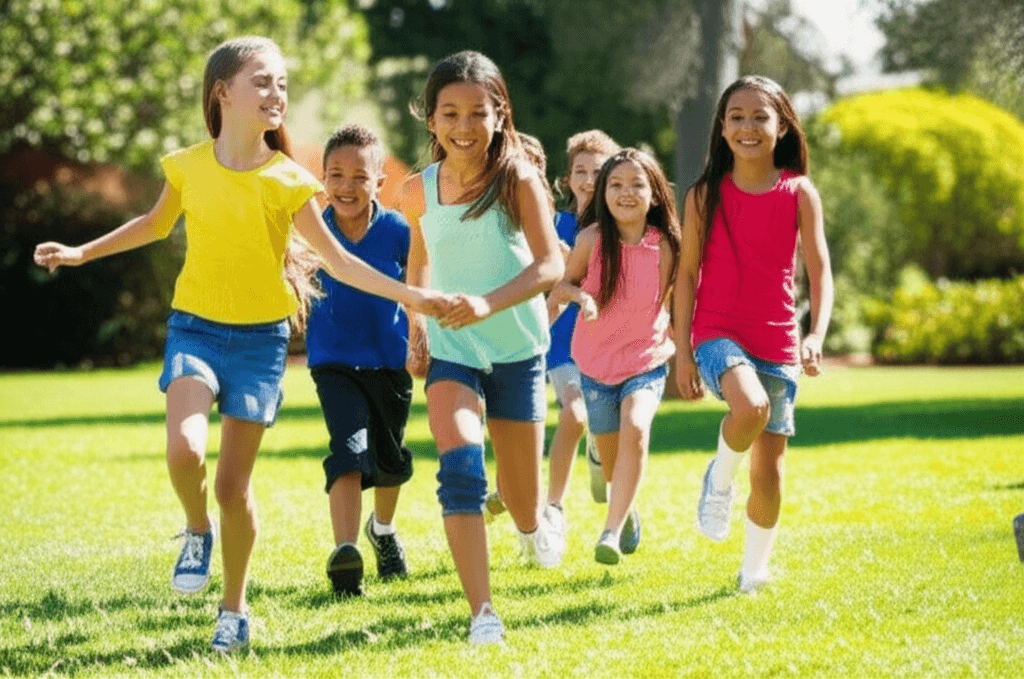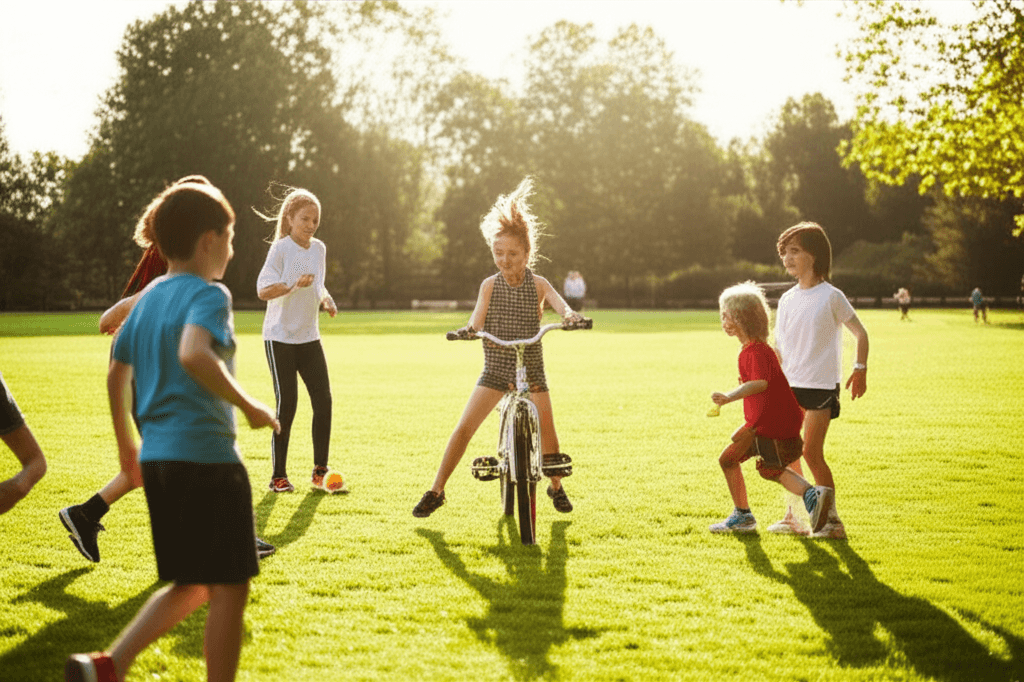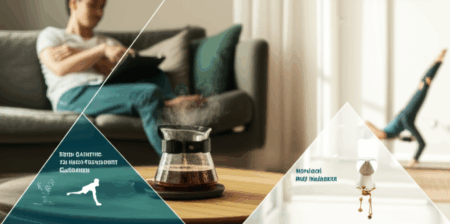In an increasingly sedentary world, the importance of physical health in children often centers on preventing chronic diseases. However, a growing body of research highlights a profound and critical connection between a child’s aerobic fitness, body composition, and their mental well-being. Studies consistently demonstrate that children with higher levels of aerobic fitness and lower body fat percentages tend to experience better mental health outcomes, including reduced symptoms of anxiety and depression, improved self-esteem, and enhanced cognitive function. This intricate relationship underscores the need for comprehensive approaches that prioritize physical activity and healthy lifestyle habits from an early age, not just for physical development but for robust psychological growth.

Understanding Aerobic Fitness and Its Mental Health Benefits
Aerobic fitness, often measured by cardiorespiratory fitness, refers to the body’s ability to deliver oxygen to muscles during sustained physical activity. Activities like running, swimming, cycling, and vigorous play all contribute to building aerobic fitness. For children, the benefits extend far beyond a healthy heart and lungs.
How Aerobic Exercise Boosts Brain Health and Mood
Regular aerobic activity triggers a cascade of positive physiological and neurological changes that directly impact mental health:
- Neurotransmitter Release: Exercise stimulates the release of “feel-good” chemicals in the brain, such as endorphins and dopamine, which can elevate mood, reduce stress, and alleviate symptoms of depression and anxiety. Even a single session of cardiovascular activity can increase helpful chemicals and decrease stress hormones like cortisol.
- Improved Brain Structure and Function: Aerobic exercise promotes neuroplasticity, helping young brains adapt and grow. It enhances blood flow to the brain, which boosts mood, concentration, and alertness, and improves cognitive functions like attention and memory. Studies suggest that higher levels of aerobic and muscular fitness are associated with greater working memory performance and academic achievement.
- Stress Reduction and Emotional Regulation: Physical movement provides a natural outlet for excess energy and tension, helping children process stress and regulate their breathing and heart rate, leading to a calmer, more centered state. This can be a powerful coping strategy for handling emotions like stress or anger. Regular engagement in aerobic exercise empowers children to function more effectively in various settings, including classrooms.
- Better Sleep Quality: Physically active children often experience more sound and restorative sleep, which is crucial for emotional regulation, concentration, and overall mental stability.
Studies have shown that moderate to vigorous physical activity in children aged 6-8 years is linked to fewer symptoms of depression two years later. The American Academy of Pediatrics (AAP) recommends that children aged 6 years and older get 60 minutes of moderate to vigorous physical activity most days of the week.

The Role of Lower Body Fat in Childhood Mental Health
Beyond aerobic fitness, body composition, specifically lower body fat, also plays a significant role in a child’s mental health. While the physical health risks of childhood obesity are well-documented, the psychological implications are equally substantial.
The Negative Impact of Higher Body Fat on Mental Well-being
Higher body fat, particularly visceral adipose tissue (VAT) — the fat stored deep within the abdominal cavity — has been linked to increased symptoms of anxiety and depression in preadolescent children. Research indicates that elevated body fat percentage (BF%) is associated with higher anxiety symptoms.
- Inflammation and Metabolic Dysfunction: Visceral adiposity is a known driver of systemic inflammation and metabolic dysfunction. This type of fat secretes pro-inflammatory cytokines and alters endocrine functions, mechanisms that are understood to adversely impact brain health and emotional regulation.
- Psychosocial Consequences: Children with obesity are more likely to experience low self-esteem, anxiety, depression, and social isolation. They frequently face bullying, stigma, and body dissatisfaction, all of which contribute to emotional distress and can hinder academic and social development. While some studies suggest that the direct impact of a child’s BMI on mood or behavioral disorders might be minimal when accounting for genetics and environmental factors, the social consequences remain a significant concern.
- Challenges in Emotional Regulation: Childhood obesity can sometimes result from an attempt to “eat the pain,” making it difficult to discern whether mental health issues are a cause or a consequence of pediatric obesity. Regardless, the presence of higher body fat can exacerbate existing mental health struggles and create new ones.
Conversely, greater lean mass, which is generally indicative of muscle tissue and metabolic health, correlates strongly with a reduction in anxiety and depression symptoms in children. This protective role could stem from physiological benefits like improved insulin sensitivity, hormonal balance, and regulated inflammation.

Interconnected Benefits: The Mind-Body Connection
The relationship between physical activity, body composition, and mental health is not a one-way street; it’s a dynamic and interconnected system.
Holistic Development Through Movement
Engaging in physical activity not only builds aerobic fitness and helps manage body fat, but also contributes to:
- Improved Self-Esteem and Confidence: Successfully participating in physical activities and developing new skills fosters a sense of accomplishment, boosting self-confidence and self-esteem. This can be particularly true when children find activities they enjoy, whether it’s team sports, dance, martial arts, or individual pursuits.
- Enhanced Social Skills: Group physical activities provide opportunities for social interaction, fostering friendships, a sense of belonging, and improved social skills.
- Increased Resilience: Regular physical activity can build resilience, equipping children with better coping mechanisms for life’s challenges.
The World Health Organization (WHO) highlights that regular physical activity in children and adolescents is associated with improved physical fitness, cardiometabolic health, bone health, cognitive outcomes, mental health, and reduced body fat.

Practical Strategies for Promoting Child Mental Health Through Physical Activity
Given the profound links, encouraging aerobic fitness and healthy body composition in children is paramount for their mental well-being.
Encouraging an Active Lifestyle
- Prioritize Active Play: For younger children, focus on unstructured, active play rather than strictly structured exercise. Activities like tag, hide-and-seek, or obstacle courses can be both fun and physically demanding.
- Explore Diverse Activities: Expose children to a variety of sports and activities to help them discover what they genuinely enjoy. This could include team sports, individual sports, dance, or outdoor exploration. For children who dislike competitive sports, non-competitive options like yoga or activities focused on participation over winning can be beneficial.
- Lead by Example: Children often mimic their parents’ behaviors. Being active yourself not only sets a positive example but also encourages your children to do the same.
- Integrate Movement into Daily Routines: Incorporate short bursts of movement, such as jumping jacks or squats, during study breaks, and encourage active travel like walking or biking to school.
- Limit Sedentary Screen Time: Excessive screen time is associated with increased adiposity and poorer cardiometabolic health and fitness in children. Limiting leisure screen time to no more than two hours a day for children aged 2 and older is recommended.
- Family-Centered Approach: Make healthy eating and physical activity a family affair, promoting a supportive environment rather than singling out a child for weight loss. Parents should approach childhood obesity with unconditional love and acceptance, focusing on health rather than appearance, and avoiding shaming or punishments.
The overarching message is clear: fostering aerobic fitness and maintaining a healthy body fat percentage are not just about physical health; they are fundamental pillars of a child’s mental well-being and overall development. By prioritizing these aspects, we can help children build a strong foundation for a happier, healthier future.







